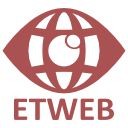ETWEB

Eye Tracking for the Web
*** Deadline has been extended until Feb 22 ***
The Web offers rich information and services that have considerable impact on our daily lives. Enhancing the usability and the accessibility of Web interaction are relevant areas of research to make the Web more useful for end-users.
The eye gaze is a strong indicator for attention, which provides insights into how a user perceives an interface and helps analysts to assess the user experience. Researchers and commercial organizations are interested to assess the attention on certain portions of a Web page, e.g., which sections are read, glanced, or skipped by users, and the Web page usability in general. The content on a Web page might be a dynamic stimulus, which is difficult to synchronize between multiple users because of its interactive nature. Hence, the focus of ETWEB is to encourage research on accurate stimulus representations of dynamic Web pages, mapping of gaze data and visualization methods to analyze the usability of Web pages.
Furthermore, the applications of eye tracking can break the interaction barrier and improve the quality of life of those with limited ability to communicate. However, most graphical user interfaces for Web access are not designed for use with eye tracking devices, which often have limited accuracy or may require unconventional selection techniques that interfere with access to information. In that regard, we encourage submissions that explore the adaptation mechanism of Web interfaces for gaze interaction (i.e., using gaze signals obtained from eye tracking devices to control the Web application environment).